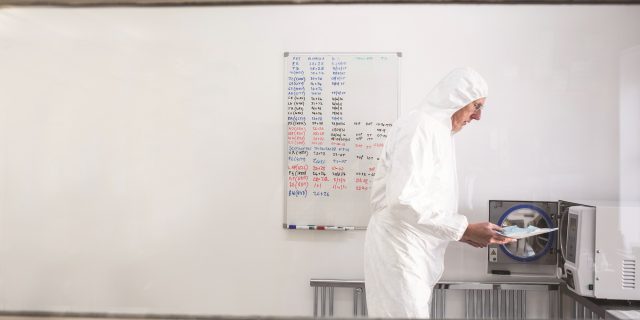13th March 2017
BlogThis week’s inspirational Healthcare Hero is Tal Golesworthy, a former boiler engineer, however when he needed surgery to repair a life-threatening problem with his aorta, he mixed his engineering skills with his doctors’ medical knowledge to design a better repair job.
Since then he has now founded his own company that funds the research and development of devices that will help people with aortic dilation avoid major surgery and lifelong drug therapy.
Read his incredible story below:
“I’m being unwittingly emotionally blackmailed by the patients.” Tal bellowed with a wry smile on his face and a subtle shake of the head. “We’ve helped 78 people with the syndrome and have over 300 years of trouble free, post operative success, but still it’s like wading through thick mud trying to get the NHS to use the product.” But it’s these 78 success stories that keep pushing Tal every day, knowing the positive impact his invention can have.
Tal Golesworthy is in his 50s, he’s an ageing rocker, a former combustion research and development engineer who has found himself in the medical world innovating new products because of a syndrome he’s had from birth. Tal has Marfan syndrome, a genetic disorder that can cause problems with eyes, skeleton, and in Tal’s case, his heart, more specifically his aorta. As the heart pumps blood around the body, the aorta stretches to accommodate the blood flow. In most cases it relaxes back to normal size but in Tal’s case it doesn’t, gradually enlarging over time. He’d known about the syndrome from an early age but a genetic study in 1992, found his aortic root diameter was significantly above the norm. This started an annual review process and in 2000 he was told the time had come to consider pre-emptive surgery.
Tal scoured the net and sought advice from the best doctors and surgeons in the business. He wasn’t happy with any of the options available. “Traditional surgery dictated I have my chest cut open, a metal valve and prosthetic aorta inserted to replace my own aortic valve and aorta and then live on a blood thinning drug for the rest of my life. No thank you!” Tal’s research and development background meant he was well equipped to handle a medical project, so he set about researching everything there was to know about Marfan syndrome, the aortic valve and the complications of this medical procedure.
He approached the project from an unusual angle. He thought that if a hosepipe is bulging, then you simply get some insulation tape and wrap it round the outside of the hosepipe to stop it bulging. So rather than replacement, his idea was to protect the current aortic root by surrounding it with a medical grade mesh. What started out as a side project became his full-time job and he set up a small team which over four years developed the various stages of imaging, CAD modelling, manufacturing, cleaning and sterilising the implant until they were happy to proceed.
Part of that team was Prof. Tom Treasure, then at Guy’s Hospital London, and Prof. John Pepper, of the Royal Brompton Hospital, London. It was John who would be carrying out the first surgery on Tal. Tal said, “I had to trust this man with my life; I had total faith in John, I was completely happy with the implant, but that didn’t mean I wasn’t completely petrified.” The operation was a success, the implant fitted and there were no immediate complications. The breakthrough had happened, a procedure that took half the time of the current one, one which meant Tal wouldn’t be reliant on debilitating drugs and would allow him to go on and live a full life. He was ready to shout from the rooftops about this amazing new product that could save the NHS time and money and decided his time would now be better spent getting this product to market, allowing people to go on living life drug-free, through his company Exstent.
The operation has been completed 78 times since that day, the youngest patient being 11 years old, the oldest, 56. There are currently over 30 publications written about the procedure in major journals, Tal talks a lot at medical conferences and his TED talk has had over one million hits. However this surgery relies on GPs and cardiologists offering the implants. “For me it’s more than 12 years post op and we’ve only done 78 patients. It’s a joke.” When you consider that with this cardiac problem there are approximately 2,000 operations a year around Europe that could benefit from the implant, it is easy to see Tal’s frustration.
This frustration is shared by a lot of other inventors trying to break into a tough medical arena. He said, “All I set out to do was to fix myself. I didn’t set out to change the world, but I’ve found myself in a position where I’m trying to change a part of the world that is very resistant to change. If I had any sense I’d walk away, but it seems I don’t have any. I can’t abandon those patients who want to exercise their choice of treatment.” It’s easy to see the desire Tal has, the passion that bursts out of him when he talks and the fact that his job isn’t a job, it’s a mission to realise the potential of an implant that can make such a positive impact on people’s lives.
You can see Tal’s TED talk here.
Learn more about the #HealthcareHeroes at: www.healthcare-heroes.com
